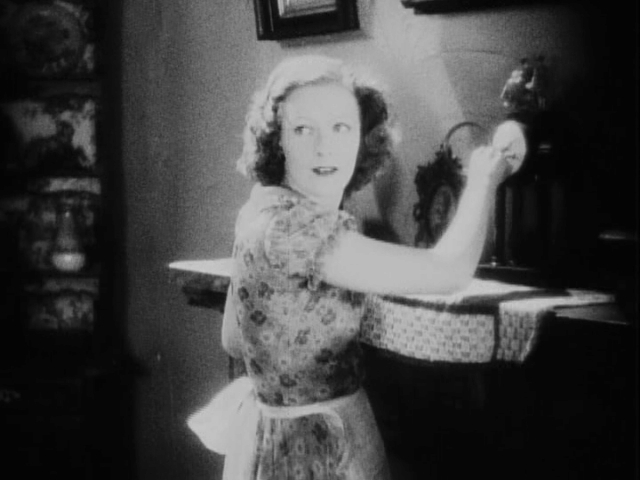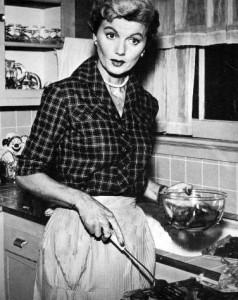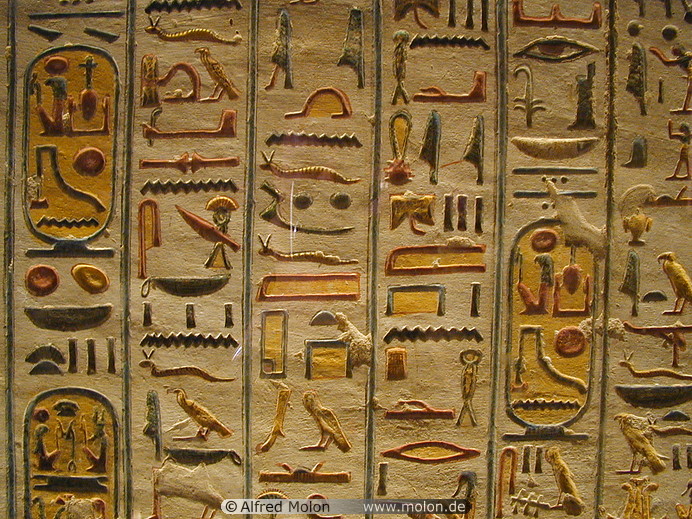|
|
|
|
|
Final Project
Posted on December 10th, 2009 at 6:09 pm by ginam
Topic: Whitman’s Song of Myself as a Monomyth
Thesis: Whitman adopts techniques from the classic hero’s epic and manages to convey the existential experience as well as the journey of the monomythic cycle. His long poem follows the form described in Joseph Campbell’s Hero With A Thousand Faces and Whitman seems to see his narrator’s personal journey as a monomythic experience within the existential realm of his mind (The Hero With A Thousand Faces 66).
Scope: Specifically focusing on Song of Myself, existentialism, and Campbell’s monomyth.
Research:
Belasco, Susan. Leaves of Grass: The Sesquicentennial Essays. Nebraska: University of
Nebraska Press, 2007.
Campbell, Joseph. The Hero With a Thousand Faces. California: New World Library
Press, 2008.
Campbell, Joseph. Pathways to Bliss: Mythology and Personal Transformation.
California: New Library World Press, 2004.
Campbell, Joseph. The Power of Myth. New York: Anchor Books, 1988.
Greenspan, Ezra. Walt Whitman’s ‘Song of Myself’: A Sourcebook and Critical Edition.
New York, NY: Routledge, 2005.
Moon, Michael. Disseminating Whitman: Revision and Corporeality in Leaves of Grass.
Boston, MA: Harvard University Press, 1991.
Richter, Eva and Balin Song. Translating the Concept of ‘Identity’ Translation and Cultural
Change: Studies in History. Amsterdam, Netherlands: Benjamins; 2005.
(xvi, 193 pp.)
Sowder, Michael. Whitman’s Ecstatic Union: Conversion and Ideology in Leaves of
Grass. New York, NY: Routledge, 2005.
Whitman, Walt. Leaves of Grass. New York, NY: W.W. Norton Publishing Co., 2002.
Whitman, Walt. Leaves of Grass. New York, NY: Barnes and Noble, Inc., 1993.
Methodology: Existentialist analysis based on Joseph Campbell’s monomyth frame.
Plan:
| The Hero’s Journey |
|
| Birth: Fabulous circumstances surrounding conception, birth, and childhood establish the hero’s pedigree, and often constitute their own monomyth cycle. |
Existentialist Birth: “For every atom belonging to me as good belongs to you…My tongue, every atom of my blood, form’d from this soil, this air, Born here of parents born here of parents the same, and their parents the same.” Whitman discusses the universal formation of humanity. |
| Call to Adventure: The hero is called to adventure by some external event or messenger. The Hero may accept the call willingly or reluctantly. |
Call to Adventure from an Inner Spirit: Whitman’s narrator finds his calling within the soul as he attempts to create an existential sensibility within himself. |
| Helpers/Amulet: During the early stages of the journey, the hero will often receive aid from a protective figure. This supernatural helper can take a wide variety of forms, such as a wizard, and old man, a dwarf, a crone, or a fairy godmother. The helper commonly gives the hero a protective amulet or weapon for the journey. |
Helpers/Amulet: Whitman’s series of tests are not even directly performed by him, instead two amulet characters (the boy and the woman at the bath) are observed interacting with their environment and the narrator analyses their reactions as an existentialist (Richter 31-5). |
| Crossing the Threshold: Upon reaching the threshold of adventure, the hero must undergo some sort of ordeal in order to pass from the everyday world into the world of adventure. This trial may be as painless as entering a dark cave or as violent as being swallowed up by a whale. The important feature is the contrast between the familiar world of light and the dark, unknown world
of adventure. |
Nature/Spirit Connect-enters the subconscious: Whitman writes, “I loafe and invite my soul, I lean and loafe at my ease observing a spear of summer grass” (Whitman 25). The narrator’s invitation of the soul and his examination of the “summer grass” show a connection with nature. The narrator is so strongly attuned with nature he appears to succumb to it entirely. |
| Tests: The hero travels through the dream-like world of adventure where he must undergo a seriesof tests. These trials are often violent encounters with monsters, sorcerers, warriors, or forces of nature. Each successful test further proves the hero’s ability and advances the journey toward its climax. |
Mental Tests: For Whitman, these tests are performed in the mind of his narrator and not in the physical world. The narrator is asked to examine his own thought process and in doing so he begins to questions his place within nature. The first test is in his encounter with the young boy. His second test occurs at the edge of the water as he observes the woman with the bathers. |
| Helpers: The hero is often accompanied on the journey by a helper who assists in the series of tests and generally serves as a loyal companion. Alternately, the hero may encounter a supernatural helper in the world of adventure who fulfills this function.
|
Helpers:
1.) the boy examining the blade of grass
2.) the woman watching the male bathers. |
| Climax/The Final Battle: This is the critical moment in the hero’s journey in which there is often a final battle with a monster, wizard, or warrior which facilitates the particular resolution of the adventure. |
Existential Climax: Whitman’s narrator reaches the climax at the end of the poem as he releases an animalistic “yawp” to signal his concession to the existentialist world, accepting he can not understand the science of life completely. Whitman writes: “I too am not a bit tamed, I too am untranslatable, I sound my barbaric yawp over the roofs of the world” (Whitman). |
| Flight: After accomplishing the mission, the hero must return to the threshold of adventure and prepare for a return to the everyday world. If the hero has angered the opposing forces by stealing the elixir or killing a powerful monster, the return may take the form of a hasty flight. If the hero
has been given the elixir freely, the flight may be a benign stage of the journey. |
Flight: Whitman’s narrator ventures from the dream state of his existentialist journey to return to the ordinary world. Whitman equates the end of the journey with the narrators symbolic return to natural elements. In the lines at the conclusion of the play the narrator is described as “vapor and air” and his “flesh in eddies” and Whitman enforces the notion that the journey ends with a lack of total understanding but a connection with the natural world (Moon 88-95). |
| Return: The hero again crosses the threshold of adventure and returns to the everyday world of daylight. The return usually takes the form of an awakening, rebirth, resurrection, or a simple emergence from a cave or forest. Sometimes the hero is pulled out of the adventure world by a force from the daylight world.
|
Return: Whitman’s narrator exemplifies this stage as he returns to his normal mental relationship with nature. His awareness is heightened and his understanding of himself is far greater than at the beginning of the quest. Yet, for the existentialist in Whitman the narrator must remain ignorant to a complete understanding of the world (Belasco 70-3). Whitman’s narrator does gain a new understanding of the world and his connection to it, although he is not able to draw any distinct conclusions. Whitman describes this notion by equating the narrator with the grass he attempted to understand. He writes, “You will hardly know who I am or what I mean, But I shall be good health to you nevertheless, and filter and fibre your blood” (Whitman). |
| Elixer: The object, knowledge, or blessing that the hero acquired during the adventure is now put to use in the everyday world. Often it has a restorative or healing function, but it also serves to define the hero’s role in the society. |
Elixer: Campbell claims the elixir “defines the hero’s role in society” (The Hero With A Thousand Faces 179-84). For Whitman, this societal definition is comparably unimportant to the personal understanding his narrator gains from his journey. His existentialist approach places more significance on the mutual lack of understanding between the narrator and nature. Whitman writes, “Failing to catch me at first keep encouraged, missing me one place search another, I stop somewhere waiting for you” (Whitman) |
| Home: The hero comes back from this mysterious adventure with the power to bestow boons on his fellow man. |
Home: Whitman return from his existentialist journey brings him back to the normal world and out of direct communication with the soul. |
Digital Museum
Posted on October 7th, 2009 at 8:35 pm by ginam


Whitman’s short poem “Old Age’s Lambent Peaks” is an examination of the final stages in the human life. His use of the word “hues” offers a multilayered meaning in the overarching theme of the poem and seems to be influenced by his life and experiences in Camden at the end of his life. The Merriam Webster Dictionary offers four distinct definitions for the word:
1. The property of colors by which they can be perceived as ranging from red through yellow, green, and blue, as determined by the dominant wavelength of the light.
2. A particular gradation of color; a shade or tint.
3. Color: all the hues of the rainbow.
4. Appearance; aspect: a man of somber hue.
The first definition relies on the examination of colors scientifically with hue being defined by the visual result of light seen on a particular wavelength. The hue in this context refers to the constantly changing colors of the setting sun as well as the changing shades of life as the colors begin to fade for the elderly. Whitman emphasizes the loss of light when the sun sets in conjunction to the loss of light as a life ends connecting aging and the setting sun through the changing hues of old age.
The second definition is best applied to the discussion Whitman has of memories and the difficulty the aging face as they sacrifice their visions of the past to the passing years. Whitman’s poem seems to focus on memories as objects that fade from the mind of the aging and in defining hue as a “shade or tint” it immediately references a memory as a convoluted image of the past quickly fading from the aging mind.
The third definition applies to the large spectrum of color Whitman uses in describing the sunset. He uses term like “fire” and “flame” in the beginning of the poem to discuss the brilliance of the sun before it begins to fade. Yet, as the poem progresses and the sunset begins to parallel the aging process Whitman uses terms like “calmer” and “golden” to describe the sun as it begins to recede behind the horizon. The hues then apply to the rainbow of color in the setting sun, which again parallels the fading hues of the aging.
Finally, and perhaps the most significant definition, is the last one cited in the dictionary. Whitman’s poem follows a declining style in which the vigor of youth is presented in the beginning of the play in conjunction with the sun before it sets. The play moves downward as the sun sets and the aging continues. Whitman’s voice is saddened at the end of the poem and the description of hue being one of “appearance” the darkness associated with the end of the day is immediately resonant to the depression of the elderly. The “man of somber hue” could easily be applied to the subject of Whitman’s poem, not outwardly expressing any single emotion and still feeling the sadness of old age.
The word hue is truly a one that encapsulates the many different layers of the poem. The voice of the aging man is projected through the poem and symbolism of the setting sun parallels the hues of color to the hues of the aging intentionally. Whitman expertly employs multiple meanings of the term in order to include a multilayered discussion of aging and its inescapable emotional hardships.
Donald Barlow Stauffer links the sunset and its varying hues to the state of Whitman mentally while he was in Camden at the end of his life. He claims, “Whitman’s mental state at the end of his life was that of fixation on the fading shades of his past. His poetry becomes increasingly focused on the idea of fading and receding into nothingness” (Stauffer 22-3). Stauffer extends his argument to include elements of his poetry, visions of death and the dying based on his personal experiences, and the growing feelings of isolation within his home and the city of Camden. For Stauffer, the idea of fading hues and colors is directly comparable to the mentality of the aging Whitman as he suffered slowly in his home. “The length of time Whitman spent contemplating death was far greater than most because he was ill for an extended period of time; and his relationship with death was highly developed” (Stauffer 31). His life was essentially funneling to its end and the constant discussion of fading sunlight and diminished colors in his later poetry adds credence to the significance of the word “hue.” For Whitman, while aging in Camden and approaching the inevitable final stage in life, the world could be easily broken into basic hues that faded with each day. “The Camden years were Whitman’s exploratory eulogy in which his own fading talent mirrored the fading city around him. As the vigor and excitement of youth became more distant to the poet, the colors of the world faded into the eternal darkness of death” (Stauffer 14).
Looking at the word “hue” and its contextual place in the poem situates Whitman in a depressing stage of life and art. The literary significance of the poet becomes much more apparent in retrospect as the poetry of the aging Whitman begins to describe a mental portrait of the artist facing his mortality in the bustling world of Camden at the turn of the century. Stauffer argues that Whitman saw the world as only a vision and his place within the society was unimportant. Whitman had become “an observer” of life and the “poems of his later years in Camden serve to mimic the depressed image of the world and the fading images of the past as Whitman neared his own symbolic darkness” (Stauffer 7).
Works Cited:
Stauffer, Donald Barlow. Walt Whitman’s Poetry of Old Age. Cleveland, Ohio:
Case Western Reserve University, 1976.
“hue.” Merriam-Webster Online Dictionary. 2009. Merriam-Webster Online. 1
October 2009. <http://www.merriamwebster.com/dictionary/ hue>
Glorifying the Corpse?
Posted on September 23rd, 2009 at 10:14 pm by ginam

This post is actually the result of our peer readings of the explications. In reading a poem and analysis of “As at Thy Portals Also Death” I began to see Whitman’s poetry differently. I had been researching death and darkness as major themes in his late poetry but this poem seems to be more centrally focused on the image of the woman (his mother) as opposed to her death.
As at thy portals also death,
Entering thy sovereign, dim, illimitable grounds,
To memories of my mother, to the divine blending, maternity,
To her, buried and gone, yet buried not, gone not from me,
(I see again the calm benignant face fresh and beautiful still,
I sit by the form in the coffin,
I kiss and kiss convulsively again the sweet old lips, the cheeks,
the closed eyes in the coffin;)
To her, the ideal woman, practical, spiritual, of all of earth,
life, love, to me the best,
I grave a monumental line, before I go, amid these songs,
And set a tombstone here.
The poem presents a frame in which the woman is glorified with words like “soverign, divine, and maternity” at the beginning of the poem which links the image of his dead mother to holiness and the idea of motherhood in general as powerful. The middle of the poem presents a physical discussion of the corpse which if relatively nondescript. The final lines in the poem return to the idealization of the mother or woman, broadening the scope of the subject again. Whitman literally insets the perfected image of the woman into the text: “the ideal woman, practical, spiritual, of all of earth, life, love, to me the best.”
It seems that in the context of this poem Whitman’s focus was not on death explicitly, but on the legacy of the dead. In specific he sees his mother, even in death, as perfected in her womanhood.

Whitman, Walt. Leaves of Grass. New York, NY: Barnes and Noble, Inc., 1993.
Walt Whitman is a Vampire…
Posted on September 23rd, 2009 at 10:14 pm by ginam

In researching Walt Whitman’s Camden years I was interested in the literary companions he kept. He formed an interesting relationship with Bram Stoker and the two exchanged letters while Stoker was composing Dracula. In Reynold’s biography he discusses their relationship and the high level of respect they had for one another (Reynolds). Stoker even seems to have based his famous character, Dracula, on the poet. Stoker is quoted: “Dracula represented the quintessential male which, to Stoker, was Whitman” (Nuzum 144). It’s a strange context for me to consider Whitman as “the quintessential male” becasue he seems so highly anti-masculine in his adoration of woman and his questionable sexuality. But in the larger frame of Stoker’s work, Dracula represents a dying age and a dying breed of the liberated man sacrificed to the Victorian Age. In that regard, Dracula and Whitman seem more alike since the strict religious regulations of the Victorians would have offended Whitman’s spiritually free stance on faith, sexuality, and nature. Is it a compliment to Whitman’s character that he inspired the character of Dracula, or is it a commentary on the state of the aging poet?

Nuzum, Eric. The Dead Travel Fast: Stalking Vampires from Nosferatu to Count Chocula. Thomas Dunne Books, 2007: 141–147.
Reynolds, David S. Walt Whitman’s America: A Cultural Biography. New York: Vintage, 1995.
Image Gloss
Posted on September 15th, 2009 at 8:27 pm by ginam

Whitman uses the term hieroglyphic once in “Song of Myself” in a section where he is examining the blade of grass. The Merriam Webster Dictionary presents two distinct definitions for the term: “Of, relating to, or being a system of writing, such as that of ancient Egypt, in which pictorial symbols are used to represent meaning or sounds or a combination of meaning and sound” and “Difficult to read or decipher.” Both definitions seem to indicate the grass is symbolic to Whitman, yet he is unable to overcome the mystery surrounding the grass and the ultimate definition remains illusive.
Whitman, Walt. Leaves of Grass. New York, NY: Barnes and Noble, Inc., 1993.
http://iamjwal.com/wp-content/uploads/2008/12/egyptian-hieroglyphics-louvre.jpg JWAL: JWAL Blog Website, 2009.
Song of Gina
Posted on September 4th, 2009 at 8:41 pm by ginam

I too am not a but tamed, I too am untranslatable,
I sound my barbaric yawp over the roofs of the world.
The last scud of day holds back for me,
It flings my likeness after the rest and true as any on the shadow’d wilds,
It coaxes me to the vapor and the dusk.
After spending nearly 2 hours figuring out how to post my first blog entry I could release only a barabric yawp of relief, much like Whitman at the conclusion of Song of Myself.
Whitman, Walt. Leaves of Grass. New York, NY: Barnes and Noble, Inc., 1993.
|
|
|







